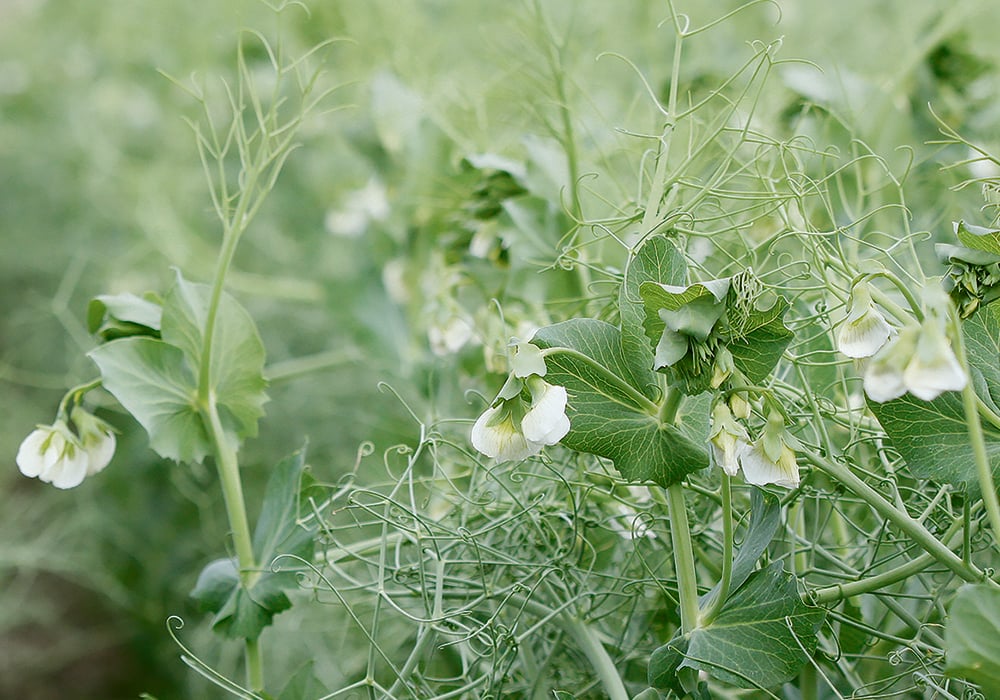The status of India’s import tariff on yellow peas has caused uncertainty for markets this season. | File photo
Producers urged to pay closer attention to the rest of the world because their global market clout is not what it once was
Canada is losing its impact on global pulse markets, producers attending a Saskatchewan Pulse Growers meeting in Humboldt, Sask., late last month were told.
Chuck Penner, president of LeftField Commodity Research, said farmers must pay more attention to the rest of the world.
“We are kind of past the stage now where Canada is the show when it comes to pulse markets. And so we need to think more broadly. We need to think about what’s going on in other parts of the world because it has a larger impact.”
Policy changes in India have meant the country no longer buys Canadian peas, he said, even after strong Canadian exports to India in the 2015-17 growing seasons.
China has picked up the slack, he added.
Adding uncertainty for pea markets this season is India dropping the import tariff on yellow peas until March 31. Penner said 350,000 to 400,000 tons of yellow peas are expected to enter India. Canada will feel the impacts of that not only this year but also into next year, he added.
“We saw a big surge of movement to India and now it’s already starting to drop off. The main question for the whole yellow pea market, is India going to extend that zero tariff deadline beyond March 31?”
Fewer Asian countries are taking Canadian peas, due to pricing and Russian exports. Russia had previously been excluded from the Chinese markets due to phytosanitary barriers, said Penner, but with that issue now resolved, Russian and Canadian pea exports to China have become a 50-50 split.
However, this split hasn’t caused any real damage, he said.
“To be honest, we haven’t really suffered from that Russian competition yet because it’s a lower quality, cheaper product put into the feed market.”
Australia has been putting pressure on the red lentil market with 1.4 million tonnes of exports reported. Penner said he expects the real number to be 1.6 to 1.7 million tonnes with exports to India, Bangladesh and Egypt. Canada is not the biggest show in town anymore, he said.
As well, Turkey used to be a major importer of lentils, but that changed this year after growing a larger crop of its own, said Penner.
India’s rabi season is in full swing with crops grown from November to April or May, and lentils are going strong with record planting and favourable weather. At about 15 percent above average for red lentil acres, that will have an impact on the country’s own export abilities, said Penner.
Canada is seeing strong demand for a variety of different pulse crops on international markets, he said, but yields and weather are going to dictate export availability next fall.
As for the upcoming growing season on the Prairies, Penner is seeing indications that pulses will receive a bump in acres due to profitability and their relatively low risk.
That change may come at the expense of canola acres. With drought conditions expected to continue into the spring across the Prairies, farmers don’t want to gamble their high input costs on the chance for much needed moisture, said Penner.
“The cost of putting in that crop is much higher and so your risk is much higher if you don’t get rainfall in spring and in summer. There are indications that they might dial some of that back.”
Barley could also see an acreage change. Penner said this is due to price and might cause a shift back into acres that saw a large drop last year.
“We had very low acres of oats last year, like a really sharp drop. We have a lot of room to get back to normal on oats, so I think we’re going see some of those barley acres shifting to oats.”
This won’t be a massive change. Penner said pulse acres won’t be the same as they were five years ago during a pea and lentil boom, but it would be nice to see those numbers again.
With Alberta and Saskatchewan being so similar, he expects the same increases and decreases, while Manitoba is a bit of a different animal with strong numbers and more opportunities for dry bean, corn and soybean acres.
Dry bean acres, while not huge in Saskatchewan, are already coming in strong.
“The buyers are telling me that they already have their contract programs basically filled, which tells me that there’s lots of interest in growing dry beans. We’ll probably see more of those acres as well,” said Penner.

